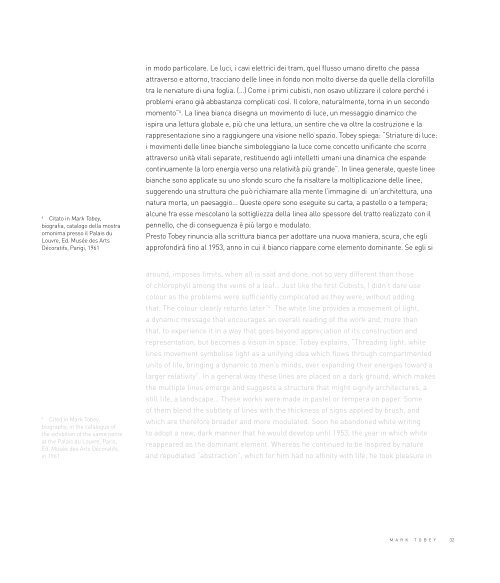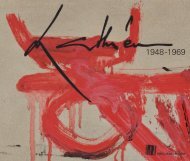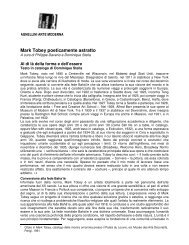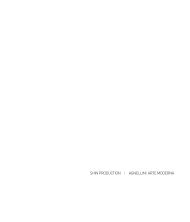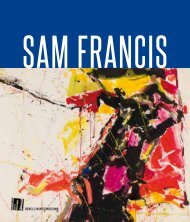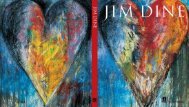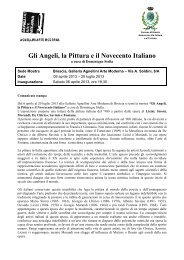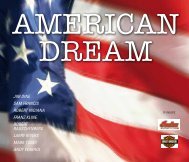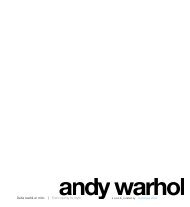Shin production | Agnellini Arte ModernA - Galleria Agnellini Arte ...
Shin production | Agnellini Arte ModernA - Galleria Agnellini Arte ...
Shin production | Agnellini Arte ModernA - Galleria Agnellini Arte ...
You also want an ePaper? Increase the reach of your titles
YUMPU automatically turns print PDFs into web optimized ePapers that Google loves.
4 citato in Mark tobey,<br />
biografia, catalogo della mostra<br />
omonima presso il palais du<br />
louvre, ed. Musée des Arts<br />
décoratifs, parigi, 1961<br />
4 cited in Mark tobey,<br />
biography, in the catalogue of<br />
the exhibition of the same name<br />
at the palais du louvre, paris,<br />
ed. Musée des Arts décoratifs,<br />
in 1961<br />
in modo particolare. le luci, i cavi elettrici dei tram, quel flusso umano diretto che passa<br />
attraverso e attorno, tracciano delle linee in fondo non molto diverse da quelle della clorofilla<br />
tra le nervature di una foglia. (…) come i primi cubisti, non osavo utilizzare il colore perché i<br />
problemi erano già abbastanza complicati così. il colore, naturalmente, torna in un secondo<br />
momento” 4 . la linea bianca disegna un movimento di luce, un messaggio dinamico che<br />
ispira una lettura globale e, più che una lettura, un sentire che va oltre la costruzione e la<br />
rappresentazione sino a raggiungere una visione nello spazio. tobey spiega: “Striature di luce:<br />
i movimenti delle linee bianche simboleggiano la luce come concetto unificante che scorre<br />
attraverso unità vitali separate, restituendo agli intelletti umani una dinamica che espande<br />
continuamente la loro energia verso una relatività più grande”. in linea generale, queste linee<br />
bianche sono applicate su uno sfondo scuro che fa risaltare la moltiplicazione delle linee,<br />
suggerendo una struttura che può richiamare alla mente l’immagine di un’architettura, una<br />
natura morta, un paesaggio... Queste opere sono eseguite su carta, a pastello o a tempera;<br />
alcune fra esse mescolano la sottigliezza della linea allo spessore del tratto realizzato con il<br />
pennello, che di conseguenza è più largo e modulato.<br />
presto tobey rinuncia alla scrittura bianca per adottare una nuova maniera, scura, che egli<br />
approfondirà fino al 1953, anno in cui il bianco riappare come elemento dominante. Se egli si<br />
around, imposes limits, when all is said and done, not so very different than those<br />
of chlorophyll among the veins of a leaf… Just like the first cubists, i didn’t dare use<br />
colour as the problems were sufficiently complicated as they were, without adding<br />
that. the colour clearly returns later” 4 .the white line provides a movement of light,<br />
a dynamic message that encourages an overall reading of the work and, more than<br />
that, to experience it in a way that goes beyond appreciation of its construction and<br />
representation, but becomes a vision in space. tobey explains, “threading light: white<br />
lines movement symbolise light as a unifying idea which flows through compartmented<br />
units of life, bringing a dynamic to men’s minds, ever expanding their energies toward a<br />
larger relativity”. in a general way these lines are placed on a dark ground, which makes<br />
the multiple lines emerge and suggests a structure that might signify architectures, a<br />
still life, a landscape… these works were made in pastel or tempera on paper. Some<br />
of them blend the subtlety of lines with the thickness of signs applied by brush, and<br />
which are therefore broader and more modulated. Soon he abandoned white writing<br />
to adopt a new, dark manner that he would develop until 1953, the year in which white<br />
reappeared as the dominant element. Whereas he continued to be inspired by nature<br />
and repudiated “abstraction”, which for him had no affinity with life, he took pleasure in<br />
m a r k t o b e y 32 33 m a r k t o b e y<br />
ispira sempre alla sua osservazione della natura e rifiuta l’“astratto”, che non avrebbe alcuna<br />
affinità con la vita, predilige differenziare i mezzi e gli stili della sua scrittura pittorica per<br />
scoprire le più recondite corrispondenze fra i suoi impulsi interiorizzati e i ritmi dell’universo.<br />
l’arte di Mark tobey cerca di abolire i confini spaziali e temporali dell’opera. lo spazio è un<br />
concetto visivo che tobey può suggerire attraverso la densità dei fili intrecciati, ma anche<br />
attraverso il vuoto. perché l’arte di tobey rinuncia alla terza dimensione e all’illusione<br />
della prospettiva che l’umanesimo del rinascimento - ancorato ad un materialismo che<br />
tobey intende evitare - ci insegna. l’arte di tobey supera la vocazione visiva dell’opera per<br />
raggiungere l’immaterialità e il vuoto che ha appreso dai calligrafi cinesi e giapponesi,<br />
i quali nel vuoto vedono il grado più elevato della forza creativa. lo spazio è un concetto<br />
che supera il visivo e che lo interessa più della sfera materiale della tela. Al di là della<br />
rappresentazione tridimensionale, egli ricerca ciò che “potrebbe davvero toccare”. in<br />
questo, è molto vicino alle idee sviluppate in europa, in particolare da Fontana nella sua<br />
teoria dello Spazialismo. la ricerca di una quarta dimensione, di un’energia immateriale,<br />
più suggerita che tangibile, deriva dal desiderio di raggiungere tutti i sensi al di là della<br />
visione analitica e razionale.<br />
varying his technique and the style of his pictorial writing in order to discover the hidden<br />
correlations between his interiorised impulses and the rhythms of the universe.<br />
Mark tobey’s art attempts to do away with the spatial and temporal limits of the work. the<br />
space is a visual concept that tobey suggests by means of the densely interlaced threads<br />
as well as empty space; his art rejects depth and the illusion of perspective as taught by<br />
renaissance humanism, which are anchored in a material dimension that he prefers to<br />
avoid. he goes beyond the visual vocation of the work to achieve a state of immateriality<br />
and emptiness that he learnt from chinese and Japanese calligraphy, as these disciplines<br />
consider the void as the acme of the creative force. Space is a concept that goes beyond<br />
the visual dimension and interests him more than the material field of the canvas. he<br />
attempted to attain what “he really could touch” beyond three-dimensionality. in that he<br />
was very close to the ideas developed in europe by, in particular, lucio Fontana with his<br />
theory of Spatialism. his search for a fourth dimension and an immaterial energy – more<br />
suggested than tangible – was the result of his desire to make contact with all the senses<br />
beyond simple analytical and rational vision.


